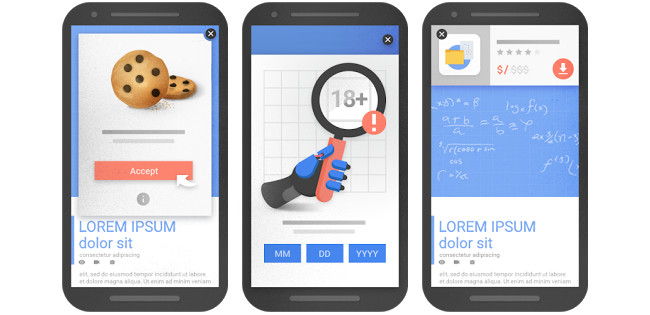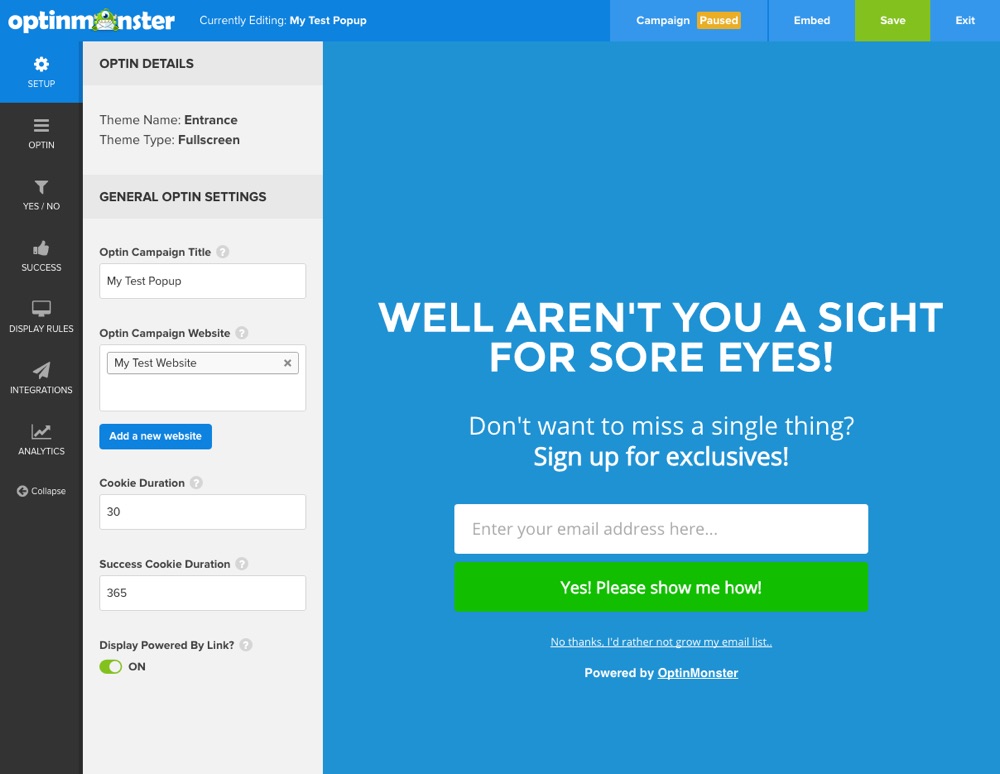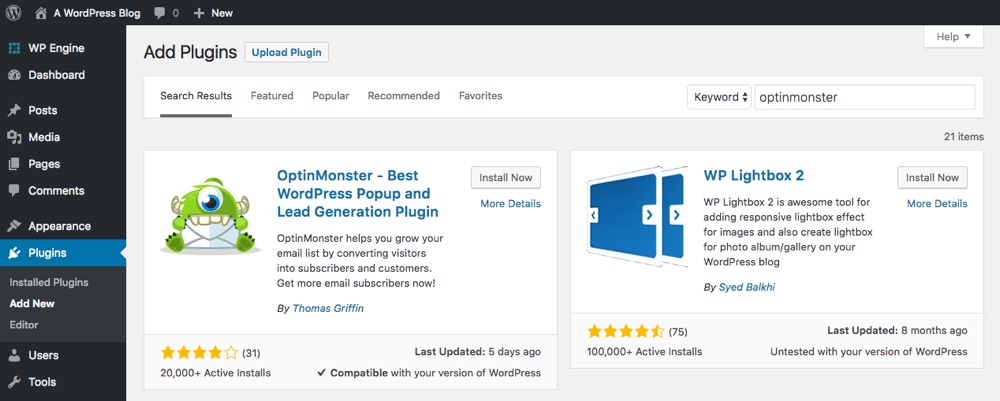How To Use Pop-ups Without Harming SEO

Let’s get one thing out of the way. Pop-ups can be very annoying to readers, but they’re a favorite with webmasters. They’re great for conversions and so there’s really no wishing away pop-ups. The real challenge lies in displaying pop-ups in a way that’s most effective for conversions, and at the same time not intrusive to readers. In this post, let’s examine how to use pop-ups safely without harming SEO on your website.
Why You Should Be Using Pop-ups
Pop-ups are great tools to catch the attention of readers and direct it to specific areas or content of your website. They can persuade a customer to purchase a product, pay for a service, signup to a newsletter, renew a subscription and more. A study by SumoMe found that pop-ups in general, have a conversion rate of 3.09%. This figure can go as high as 9.28 when it comes to top performing pop-ups.
You can also use pop-ups to direct visitors to any call-to-action button, to make announcements and provide information.
How to Design a Pop-up that Converts
In the study above, you may have noticed not all pop-ups are equally effective in converting. The conversion rates increase significantly for top performing pop-ups. So, let’s take the time to understand what goes into creating a great pop-up. Here are 8 aspects of a good pop-up:
- A catchy and relevant headline that conveys straightaway what the pop-up is about (Subscribe! Black Friday Sale! etc).
- A clear description that does not leave readers guessing is essential. You should disclose what your popup is for not only because it could be considered deceptive advertising (which the FTC does not allow) but also because it looks spammy – people want to know what they’re clicking. Would you click on a popup that just said FREE with no other details? Probably not.
- Visual appeal is also key. Use colors, imagery and fonts that stand out just be careful not to go overboard. Crazy graphics or dated styles can make an optin look like spam, so keep current design trends as well as the look and feel of your own website in mind when creating your popup.
- The pop-up needs to be relevant to the context of the webpage on which it appears. You need to first use the page to build value, and then use that value to create interest in the pop-up. For example, on a blog page, you could ask the readers to Subscribe to the Blog while on your shop you might ask them to Subscribe for Deals.
- Along with relevancy your popup should be placed in a location that makes sense. Most readers aren’t going to subscribe to your blog before they’ve read anything, so adding a slide-in optin once they’ve gotten halfway down the page, or a pop-up when they’ve finished the article would probably be better. Think logically when choosing how and where you place your pop-ups.
- Offer something that is of value to your readers. Make it worth their while to click on the pop-up. Discounts, access to more valuable content, free memberships, links for further reading can make it worthwhile for visitors to click on the Pop-up.
- The pop-up should be a direct link to the desired content. The reader should not have to click too many times or perform multiple actions after clicking the pop-up. If you’re offering a newsletter subscription the readers should be able to enter their information and land on a useful, related followup page that confirms subscription or even shares more content they may enjoy. If you’re offering a coupon, clicking should apply (or copy) the code and take the user to your shop.
- Creating an element of curiosity can also get a reader to click through a pop-up. But, as mentioned before, the action should lead to something worthwhile. So while a mystery discount or “secret” tips for success are great click-bait make sure to deliver on your promise.
Besides these factors, you need to pay attention to the statistics when considering how to use pop-ups. While we can share tips to help you craft your pop-up we can’t tell you what exactly will work best for your website in your specific industry niche. Use the reporting or analytics for your optin plugin or software to track which pop-ups are converting and make improvements from there.
Does Google Penalize Websites with Pop-ups?
The quick answer is maybe – it depends on if your pop-up is considered intrusive. Even if you manage to fully optimize your pop-ups it doesn’t mean that you can go ahead and fill your webpages with them. At least, not if you want to be found by Google. Some visitors simply close the window and move away from your website if they chance upon a pop-up. To get visitors to stick around longer on your webpages, and to get Google to list you in a search result, you need to ensure that the pop-ups are not intrusive to the user.
With effect from January 10th, 2017, Google has started to penalize pop-ups (interstitials) on mobile webpages that are intrusive to the reader. Google wants to be sure that content being served to users is easy to access no matter what device they use to browse the web.
The search methods of Google and other search engines is constantly evolving. Today, the traffic from mobile devices outstrips the traffic from desktops. In keeping with this growth in mobile traffic, Google is including ranking factors that stress on the mobile experience of the user. Mobile devices use some different search methods such as local search and voice search. Search engines are greatly influenced by these search habits of mobile users. In fact, Google has moved on to mobile-first indexing, and in any search, Google bots now look at your mobile webpages ahead of the content on your desktop.
To make content more easily accessible on mobiles, Google has put out mobile guidelines that explain what pop-ups are acceptable on mobiles and what are not. The basic rule is that pop-ups and any other kind of interstitials that are intrusive to readers are a big NO. This is applicable to mobile webpages only.
Examples of Acceptable Pop-ups

Google offers examples of non-intrusive pop-ups. The pop-ups similar to these are fine and considered perfectly acceptable by Google,
- Pop-ups in response to legal requirements such as age verification or cookie usage. Same goes for pop-ups that require login to access locked content.
- Pop-ups that occupy reasonable screen space and are easily dismissible.
- Smaller messages like banners, inlines or slide ins, or content hidden behind tabs.
From the illustrative list above, it may be safe to conclude that including expandable content such as accordions or expandable boxes are safe options.
Examples of Unacceptable Pop-ups

Google does not approve of pop-ups that significantly impair or prevent people from using your website. This includes:
- Classic interstitial ads and splash ads that interrupt users as they navigate between pages and/or before they reach your homepage.
- New window pop-ups that open as soon as a user clicks on your page.
- Content-covering pop-ups that users are forced to close to continue reading.
- Standalone interstitials that must be dismissed before users can access your content.
- Deceptive page layouts whose above-the-fold portion looks like an interstitial.
From these examples, we can conclude that the following types of interstitials will also not find favor with Google,
- Spammy, difficult to dismiss pop-ups that redirect visitors who accidentally click on them, or diminish your users’ experience.
- Full-screen overlays, welcome mats, and ad modals.
- Intrusive lightbox ads.
- Interstitials that ask a user to install a mobile app.
While this may sound a bit harsh, it makes sense. Google is focused on user experience and there are ways for you to still grow your audience with pop-ups without getting on Google’s bad side.
How To Use Pop-ups Without Harming SEO
If you’ve reached this point, you should have an idea of how to use pop-ups and a fair understanding of the types of pop-ups that likely will not impact your site’s SEO. You could consider using the following as broad guidelines when adding pop-ups to your site.
Switch to exit intent pop-ups. Google’s John Mueller confirmed that interstitials triggered by exit intent are still allowed. It’s only interstitials that show up between the search click and accessing content that have a negative impact on ranking. Consequently, popups that appear while moving from page to page, or exit intent popups will likely not affect ranking.
Delay the appearance of the pop-up. Do wait until your readers are engaged with your content, and make sure the pop-up closes automatically. You can use Google Analytics to find out the average time a user lingers on a webpage. Many optin plugins include features to setup time or interaction based triggers for your popups making it easy to delay them until the reader is involved in your site content.
Also it’s a good idea to maintain long intervals between any two appearances of your pop-ups. Users don’t want to be bombarded with requests to “subscribe” on every page they visit. Good pop-up use cookies so you can detect and retarget specific users to offer different pop-ups, special offers for returning users or even interaction based followups.
You can also consider simply hiding your pop-ups on mobile devices and only showing them on desktops. Or you could create and define specific pop-ups campaigns for different devices so you can still use overlay welcome mat style.
OptinMonster for Advanced Pop-up Options
So how do you use all of these tips to actually create and implement awesome optins that won’t result in a Google penalty? Or are you wondering how to use pop-ups with WordPress specifically? We recommend OptinMonster. This powerful lead generator offers tons of optin and features to fully customize your pop-ups, welcome mats, slide in optins, content lockers, custom offers and more. Best of all it’s easy to use and implement with WordPress.

You can read our OptinMonster review to see more screenshots and a full walk though of getting started, but to sum it up OptinMonster makes it so easy to create, customize and manage your own optins and pop-ups for WordPress.

Actual optin creation happens on their website where you can use the drag and drop builder, built-in styling options (though they do support custom CSS), mobile options, custom effects and campaign settings to design your pop-ups. You can also select from general timing options as well as more advanced exit-intent, scroll trigger, inactivity, scheduling and more. This is in addition to the ability to target specific users based on referrals, geolocation, device or even cookies for personalized campaigns.

When your optin is ready just install their plugin, connect to your OptinMonster account and select the optins you’d like to enable. And while there are tons of other great features we could mention, the last we’re going to touch on is the built-in analytics. You can quickly see at a glance which pop-ups and optins are converting, test changes with A/B split testing and track performance from your dashboard.
So if you’re interested in adding pop-ups to your website and you want to be sure to avoid Google penalties, OptinMonster offers all the features and options you could possibly want.
To Sum Up
Pop-ups and other interstitials have a lot going for them. Nothing quite grabs a reader’s attention like a pop-up, but many users and Google bots do not take kindly to them. If you have noticed an increase in the bounce rate on your site post January this year, your pop-ups may be one possible reason for that.
Further, as at the time of writing this post, Google has announced that with effect from Feb 15th 2018, Chrome’s in-built ad-blocker will start blocking advertisements that are not complaint with the standards set by the Coalition for Better Ads, of which Google is a member. These standards cover both desktop and mobile experiences. Examples of such advertisements are pop-up ads, large sticky ads and ads that play audio unexpectedly. Henceforth, websites will also need to check if their pop-ups are compliant with the standards set by the Coalition for Better Ads as well.
If you have any other questions or more tips to add on how to use pop-ups please leave us a message in the comments below.





There’s a lot of conflicting info out there on pop ups. Needless to say that this clears it up and restores my faith in sumome!